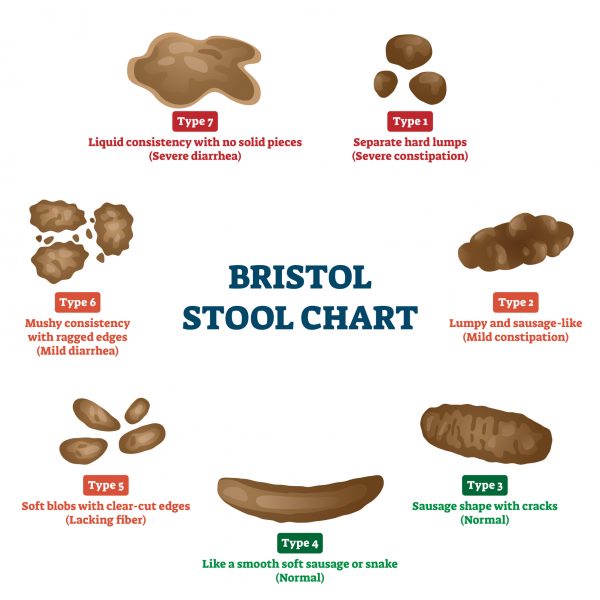Get the latest news from
The Gut Experts
There are many different digestive symptoms that can cause people discomfort and distress. Broadly speaking we divide these into ‘upper digestive’ symptoms and ‘lower digestive’ symptoms. Upper digestive symptoms affect us from just below the diaphragm and upwards, whereas lower digestive symptoms affect us from the diaphragm downwards.
Common Upper Digestive Symptoms
Common Lower Digestive Symptoms
What is a normal bowel habit?
This really does vary from person to person, but the accepted wisdom is that the normal range is anywhere from passing one bowel motion every 3 days, to three times per day. Some people will be in the middle, once per day like clockwork.
What do normal stools look like?
Again there is a normal range of appearance, and we use the Bristol Stool chart to help us describe the appearance of stools. Normal stools are somewhere in the middle from types 3-5, constipated stools are types 1-2 and loose stools are types 6-7.

The Gut Experts
to get the latest gut health insights,
our top tips, recipes and more.